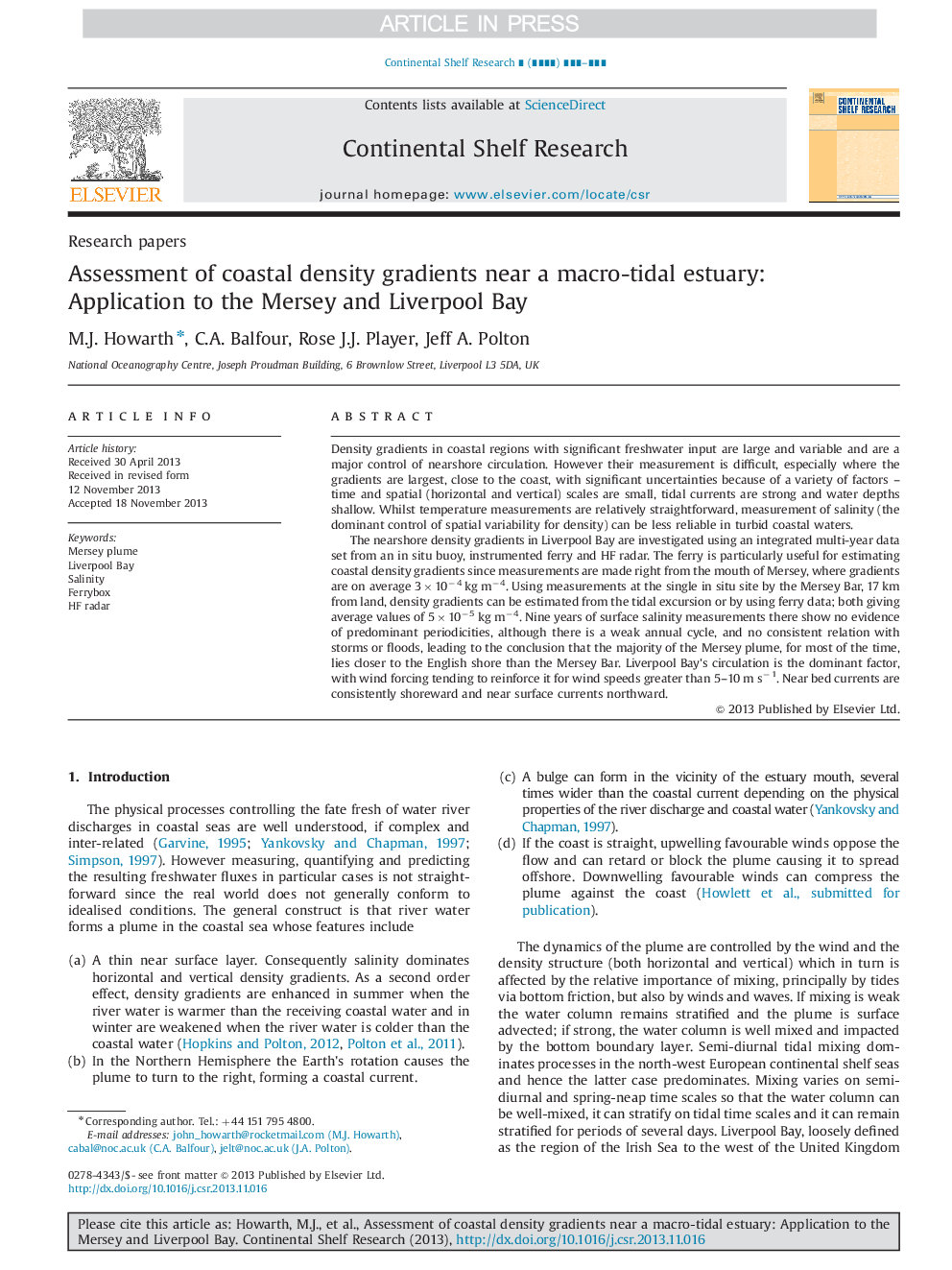| Article ID | Journal | Published Year | Pages | File Type |
|---|---|---|---|---|
| 6383171 | Continental Shelf Research | 2014 | 11 Pages |
Abstract
The nearshore density gradients in Liverpool Bay are investigated using an integrated multi-year data set from an in situ buoy, instrumented ferry and HF radar. The ferry is particularly useful for estimating coastal density gradients since measurements are made right from the mouth of Mersey, where gradients are on average 3Ã10â4 kg mâ4. Using measurements at the single in situ site by the Mersey Bar, 17 km from land, density gradients can be estimated from the tidal excursion or by using ferry data; both giving average values of 5Ã10â5 kg mâ4. Nine years of surface salinity measurements there show no evidence of predominant periodicities, although there is a weak annual cycle, and no consistent relation with storms or floods, leading to the conclusion that the majority of the Mersey plume, for most of the time, lies closer to the English shore than the Mersey Bar. Liverpool Bay's circulation is the dominant factor, with wind forcing tending to reinforce it for wind speeds greater than 5-10 m sâ1. Near bed currents are consistently shoreward and near surface currents northward.
Related Topics
Physical Sciences and Engineering
Earth and Planetary Sciences
Geology
Authors
M.J. Howarth, C.A. Balfour, Rose J.J. Player, Jeff A. Polton,
